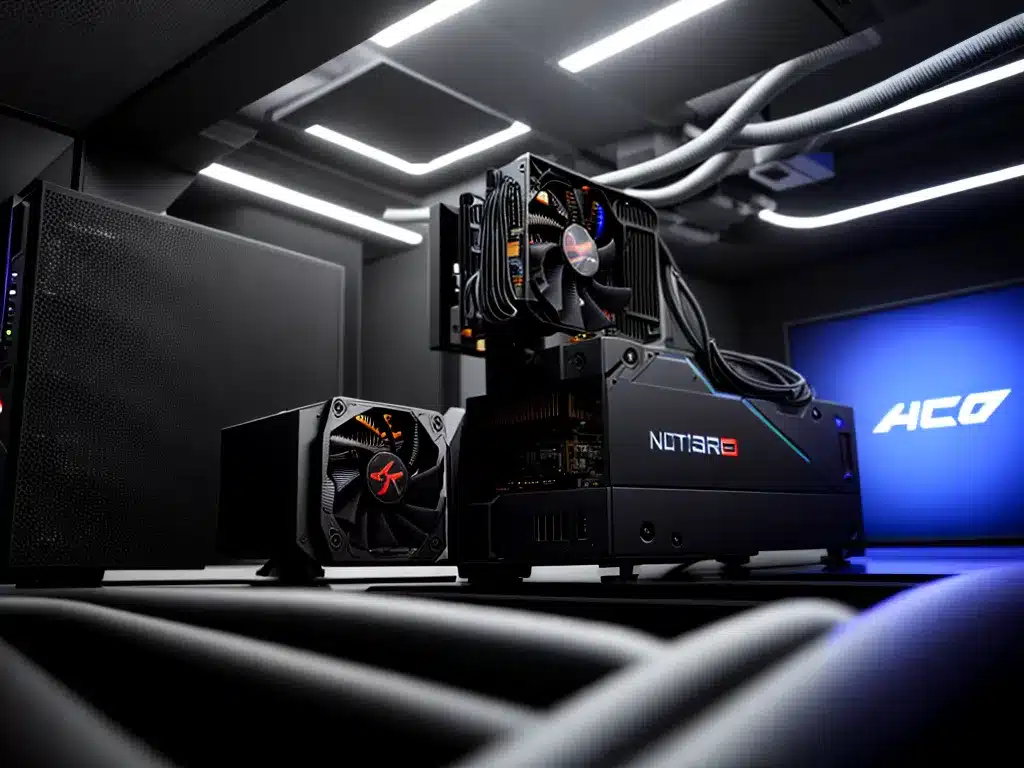
The popularity of game streaming services like Google Stadia, Nvidia GeForce Now, and Xbox Cloud Gaming is having a major impact on graphics card requirements for PC gamers. As more people embrace cloud gaming, local hardware demands are decreasing. However, hardcore gamers continue to invest in high-end GPUs to maximize performance and take advantage of cutting-edge graphics.
Reduced Need for High-End Local GPUs
Game streaming offloads the workload of rendering graphics to remote servers. This means gamers don’t need expensive GPUs in their own PCs to play AAA games with maxed out settings. A basic graphics card is sufficient to decode and display the video stream.
For example, Google Stadia officially recommends an Internet connection of just 10 Mbps for 720p 60fps gameplay. This bitrate is achievable even on integrated graphics. Dedicated GPUs often cost hundreds of dollars but are not required for cloud gaming.
“Thanks to game streaming services, my 6-year-old laptop can now run Cyberpunk 2077 at high settings without a hitch or hardware upgrade.”
Additionally, services like Nvidia GeForce Now let subscribers play on underpowered PCs by connecting to virtual machines with high-end RTX GPUs. This further reduces the need for local graphics horsepower.
Casual gamers are increasingly satisfied with the convenience of cloud gaming and no longer feel the need to invest in expensive GPUs. For many, built-in laptop graphics or even integrated GPUs are now sufficient.
eSports Pro Gamers Still Rely on Powerful GPUs
However, for eSports professionals and hardcore PC gamers, cloud gaming isn’t the end of powerful graphics cards. Latency, reliability, graphics quality, and control still matter greatly to these users.
Serious competitive gamers will continue building rigs with the latest GPUs to eliminate lag, achieve the highest frame rates, and maximize responsiveness. For example, competitive Fortnite players strive to achieve 240+ fps for ultra low latency during fast-paced build battles. This level of performance still requires top-tier graphics cards like the RTX 3090.
Additionally, popular eSports titles like CS:GO, League of Legends, and Valorant rely heavily on client-side hit detection. The faster a gamer’s PC can process these calculations, the more responsive the gameplay feels. This gives an advantage in competitive play.
“I’ll never give up my custom-built rig with liquid cooled RTX 3090 GPU. Those extra frames win me tournaments and money in eSports.”
For streamers who care about image quality and creative control, running games locally instead of in the cloud remains important. This will sustain demand for new GPUs that outperform last generation’s models.
The Future of Graphics Cards in the Game Streaming Era
Game streaming services have undoubtedly diminished the need for powerful graphics cards among mainstream gamers. However, the impact is less pronounced for eSports professionals and hardcore gamers who value high frame rates, responsiveness, reliability, and control.
Nvidia and AMD will continue releasing newer GPUs with performance improvements to cater to this demanding audience. We can expect introducing new visual technologies like ray tracing to further incentivize upgrades. However, GPU manufacturers will likely shift focus to data center and cloud gaming applications going forward.
The rise of game streaming has fundamentally changed graphics requirements for most gamers. But for competitive gaming, streaming, and an uncompromised experience, latest-generation GPUs remain highly relevant. The days of expensive video cards are far from over, but their target audience is narrowing.












